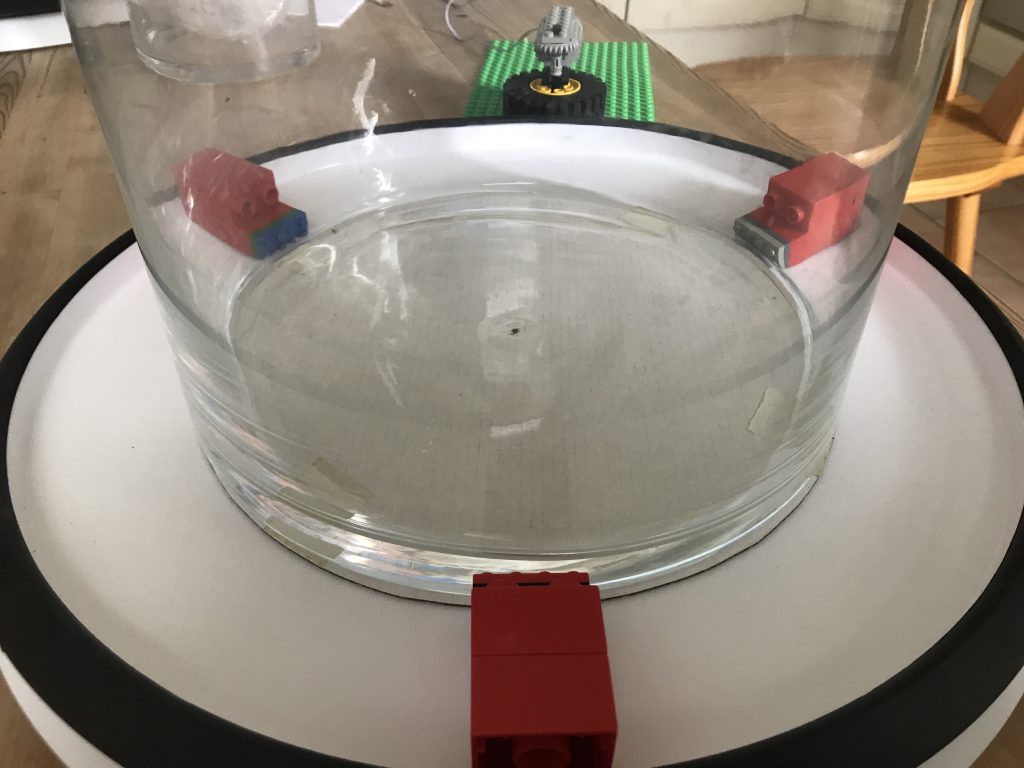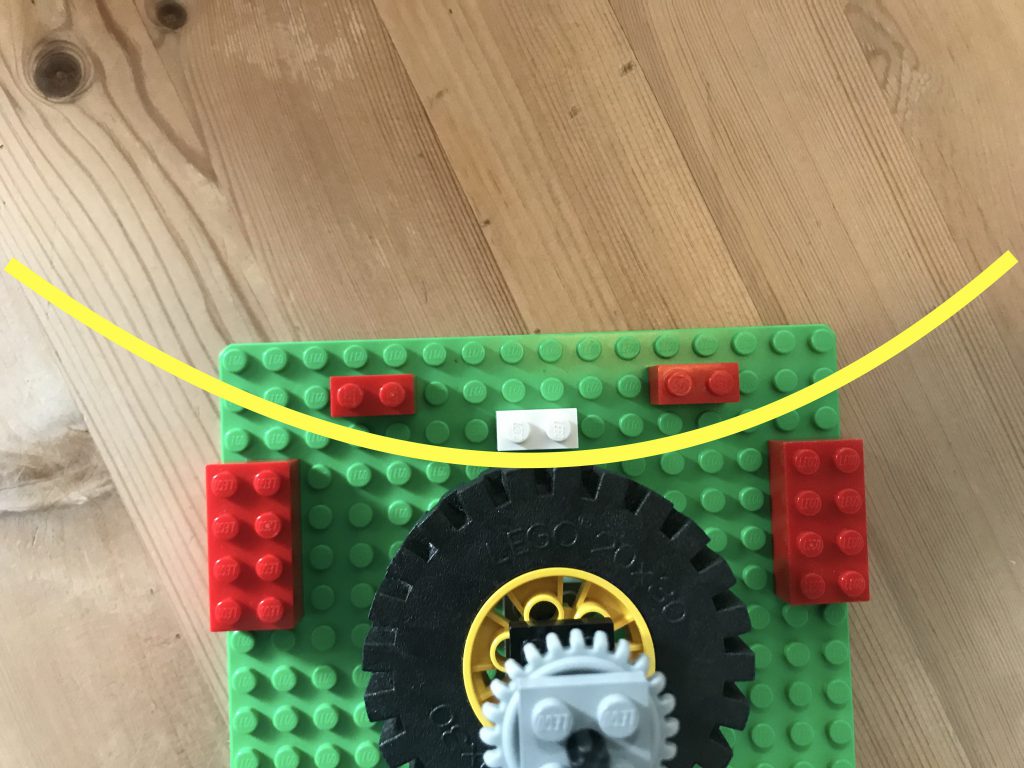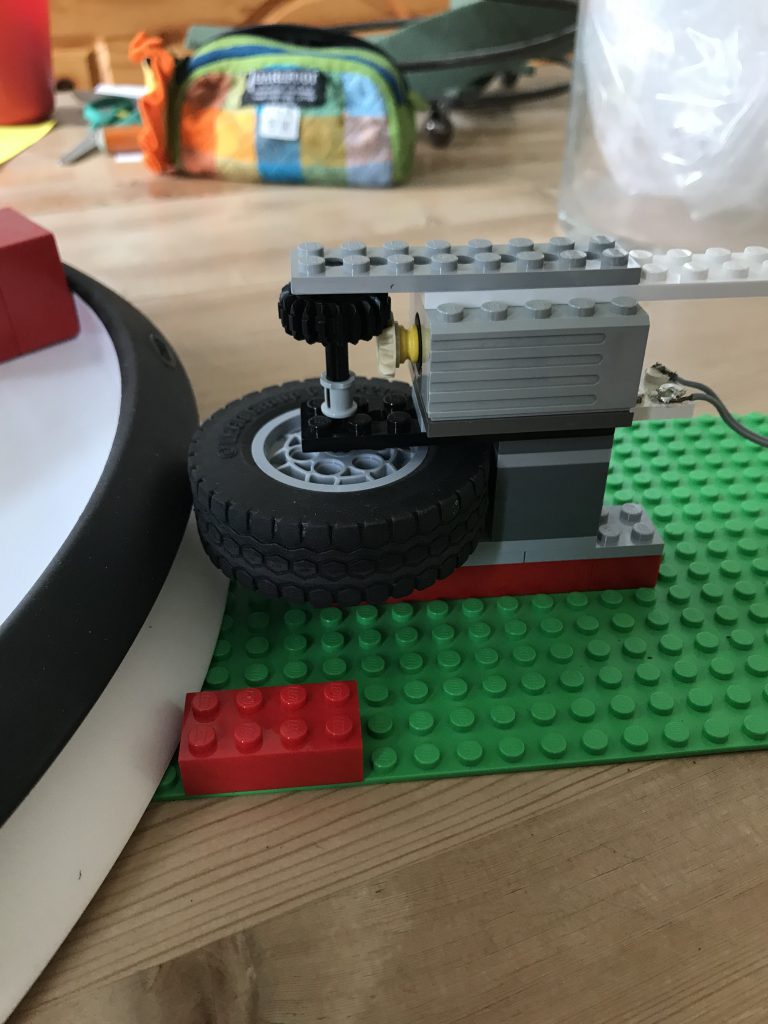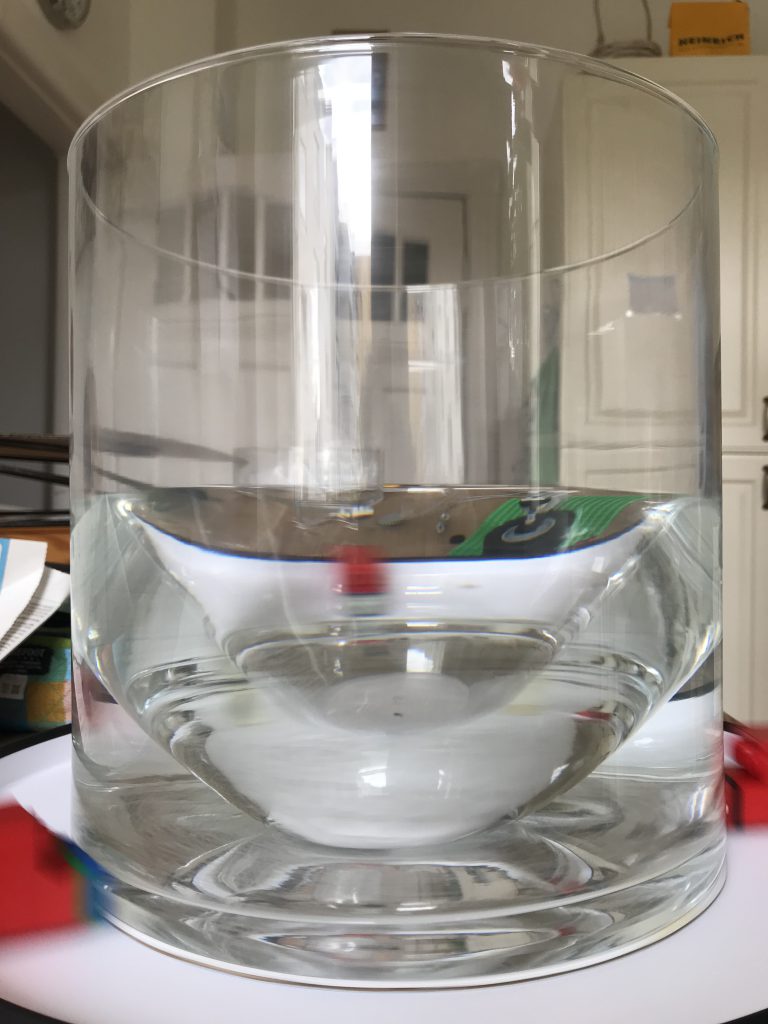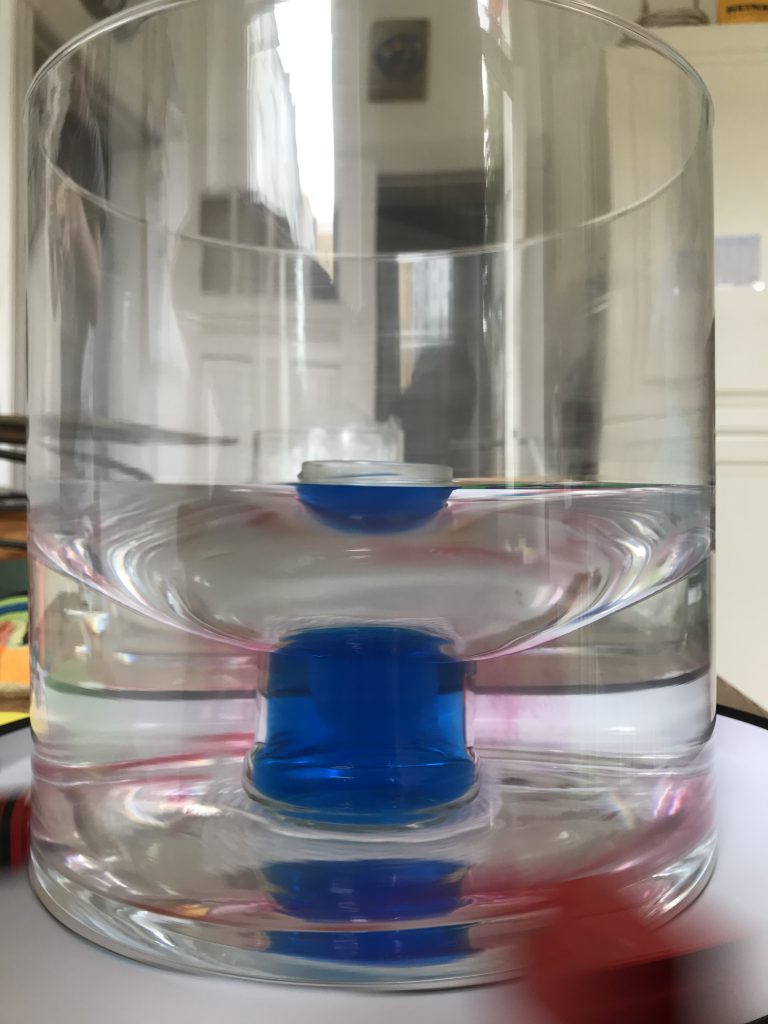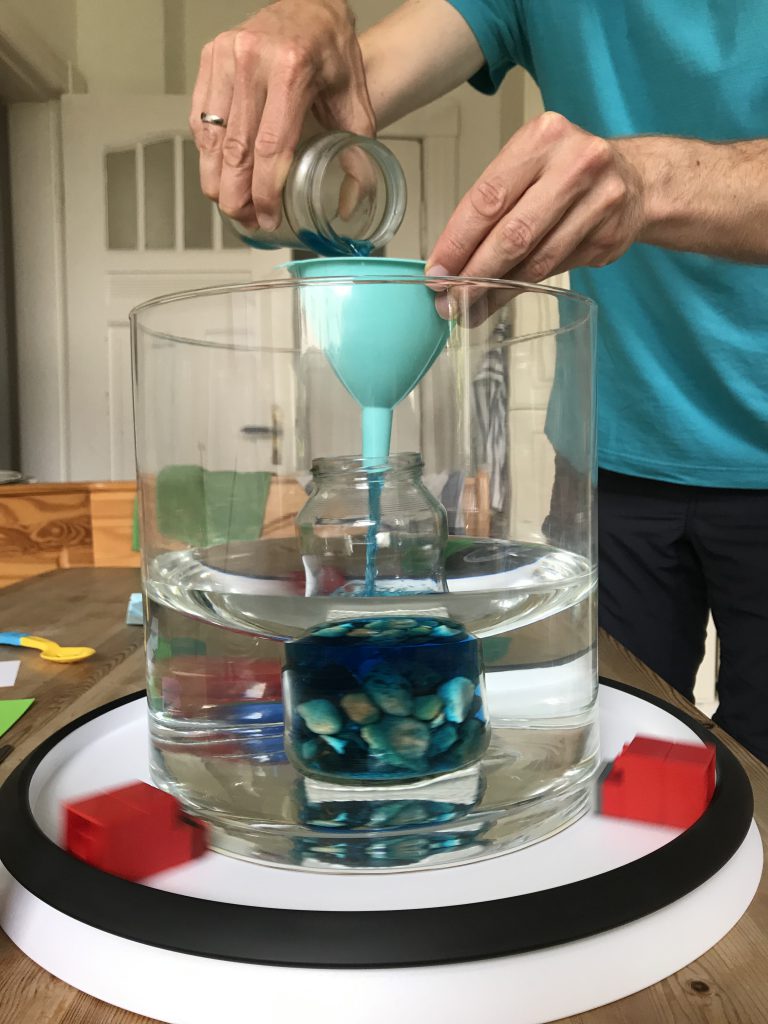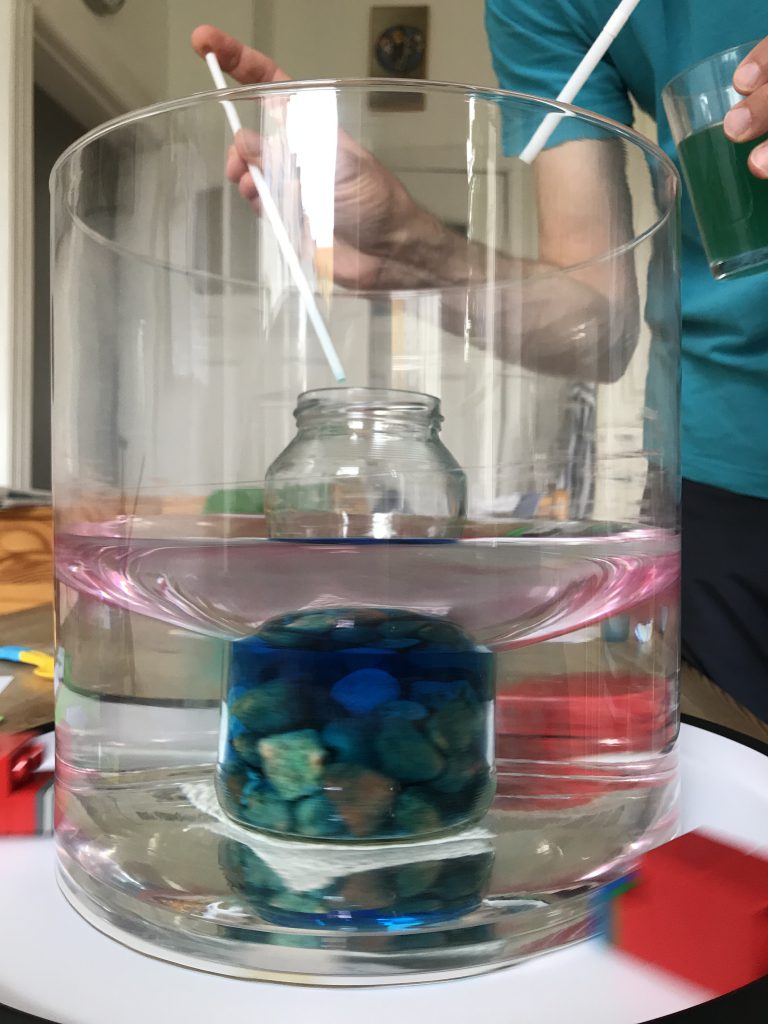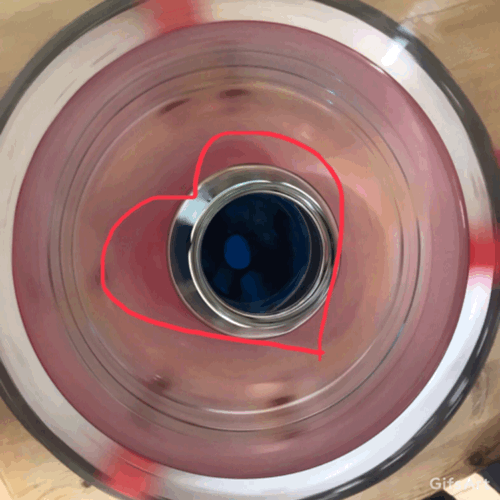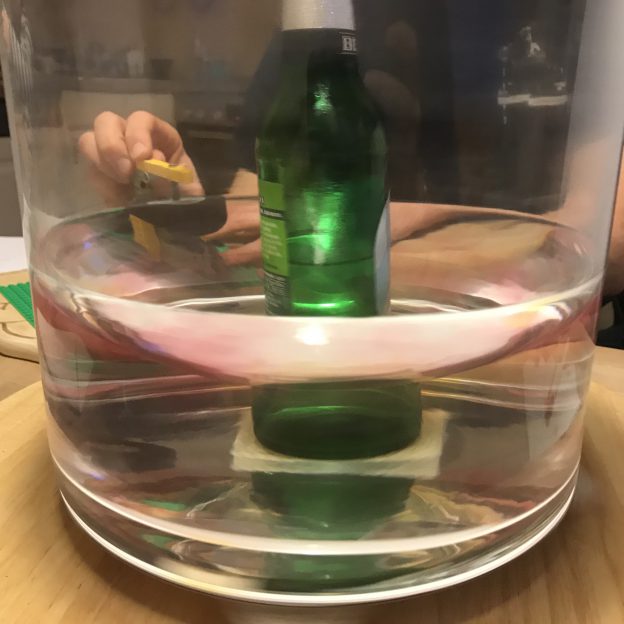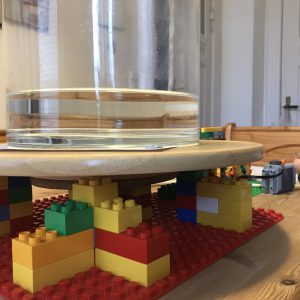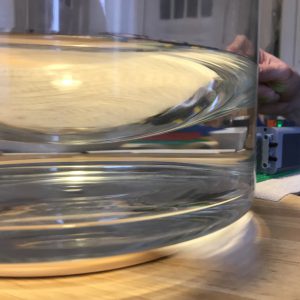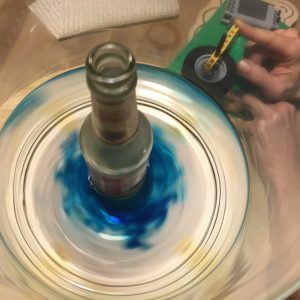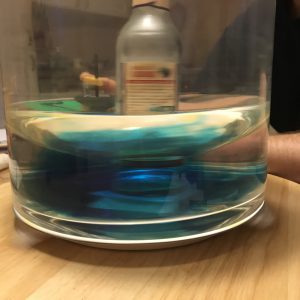The DIYnamics-inspired turntable that Torge and myself have been working on for our “dry theory to juicy reality” project is finally working well!
This is what the setup now looks like (how simple is that?!) and we had an exciting morning testing different experiments!
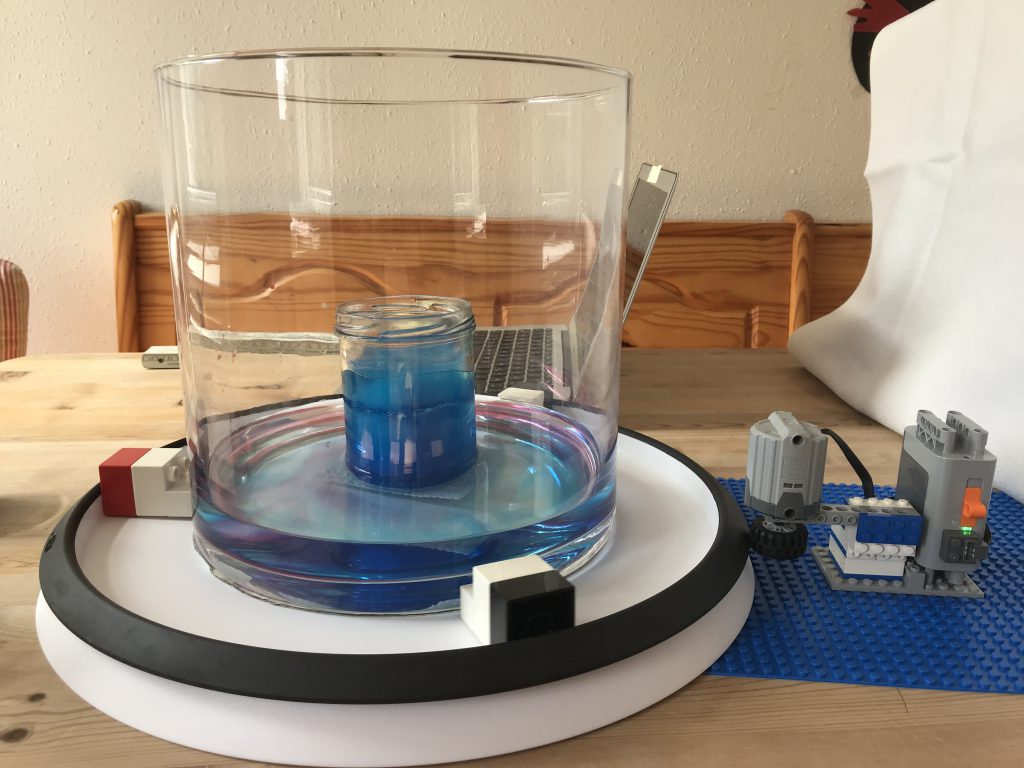
The one experiment that we have been using as test case in all our previous sessions is the Baroclinic Instability / Hadley cell circulation. There are sketches of the setup and the expected circulation in this blogpost, so just a quick reminder: We place a cold core in the center of our tank (here a glass with blue ice in it), spin the tank (at approximately 20rpm) into solid body rotation, and introduce dye (blue towards the center, red towards the outer edge of the tank).
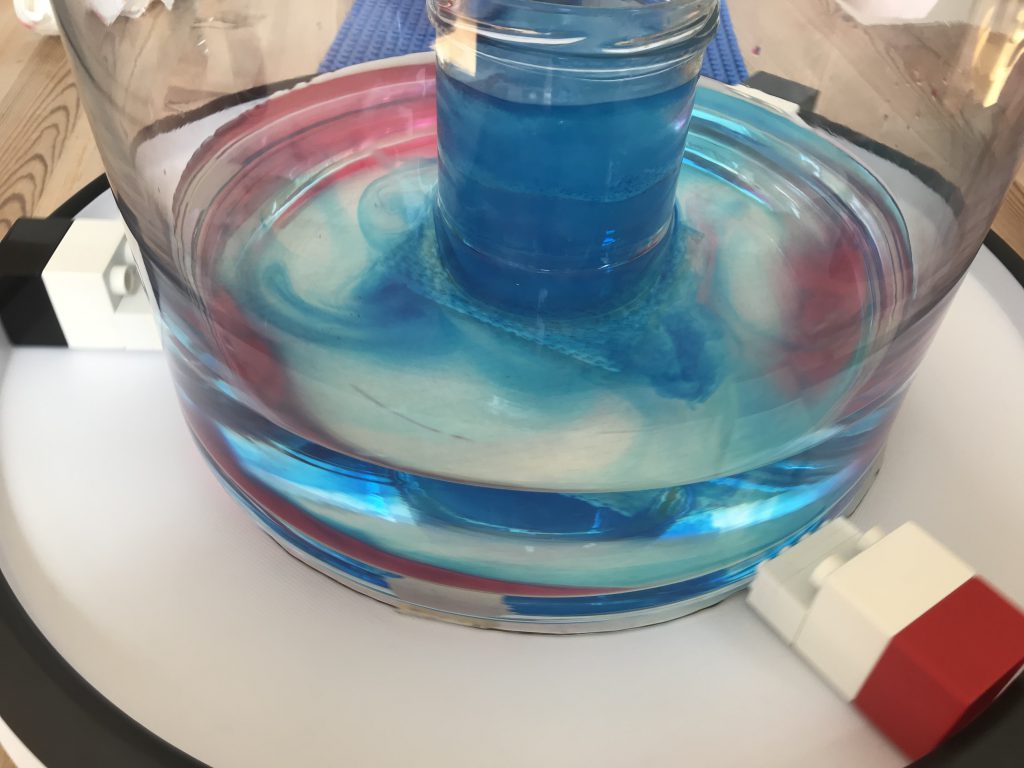
And what happens then is just beautiful: We get 2D instabilities that transport cold (blue) water outwards and warmer (room-temperature, red) water towards the center of the tank.

We’ve run the experiment three times with different water levels (and once with Southern Hemisphere rotation just for fun) and it worked beautifully each time.
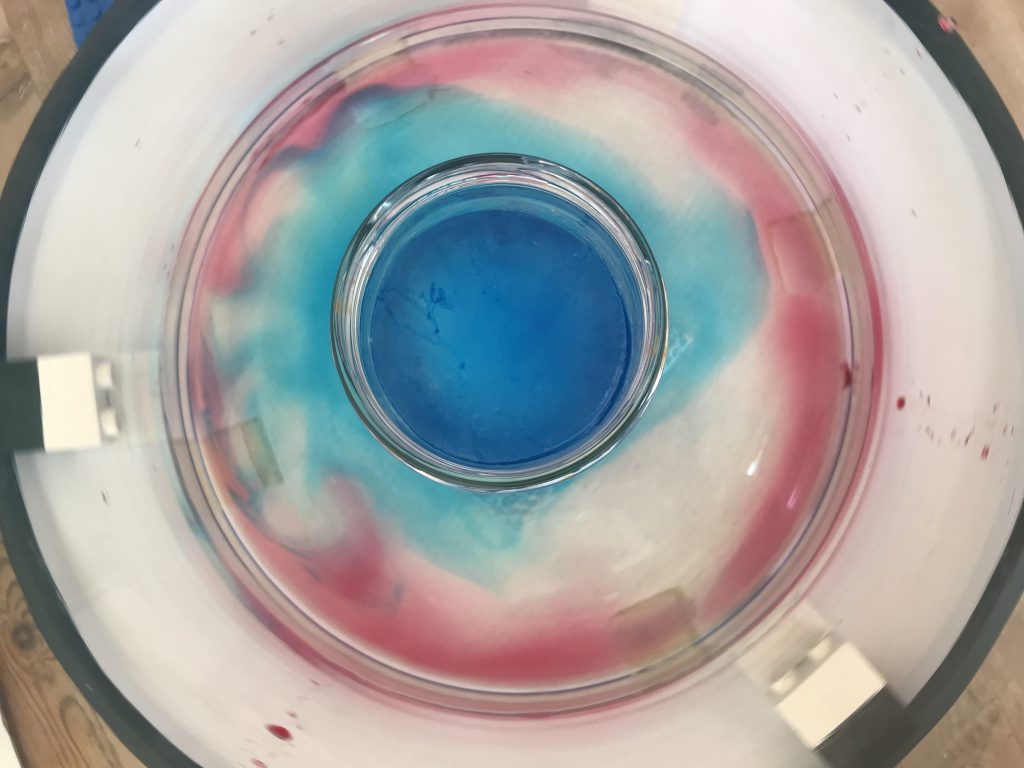
I find it always fascinating how there is hardly any mixing between the red and blue curtains (and there shouldn’t be any because rotating flows become 2D (as shown here)).

Just look at how the dye curtains form when we first add the blue dye…
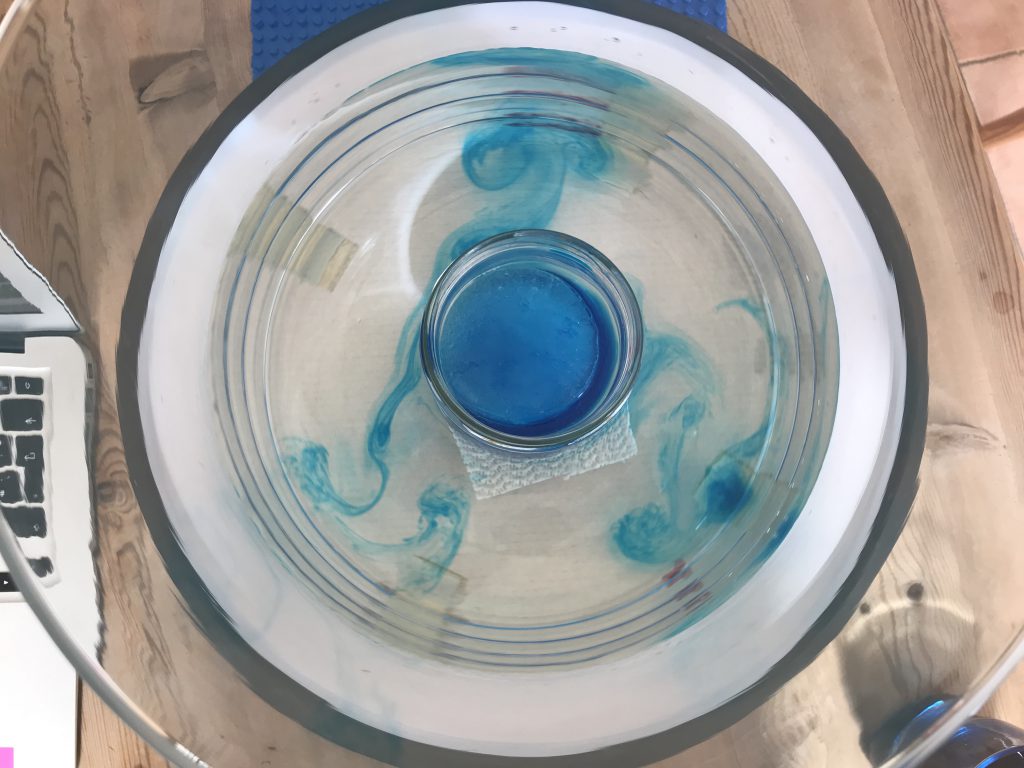
And then a little later added some red dye…
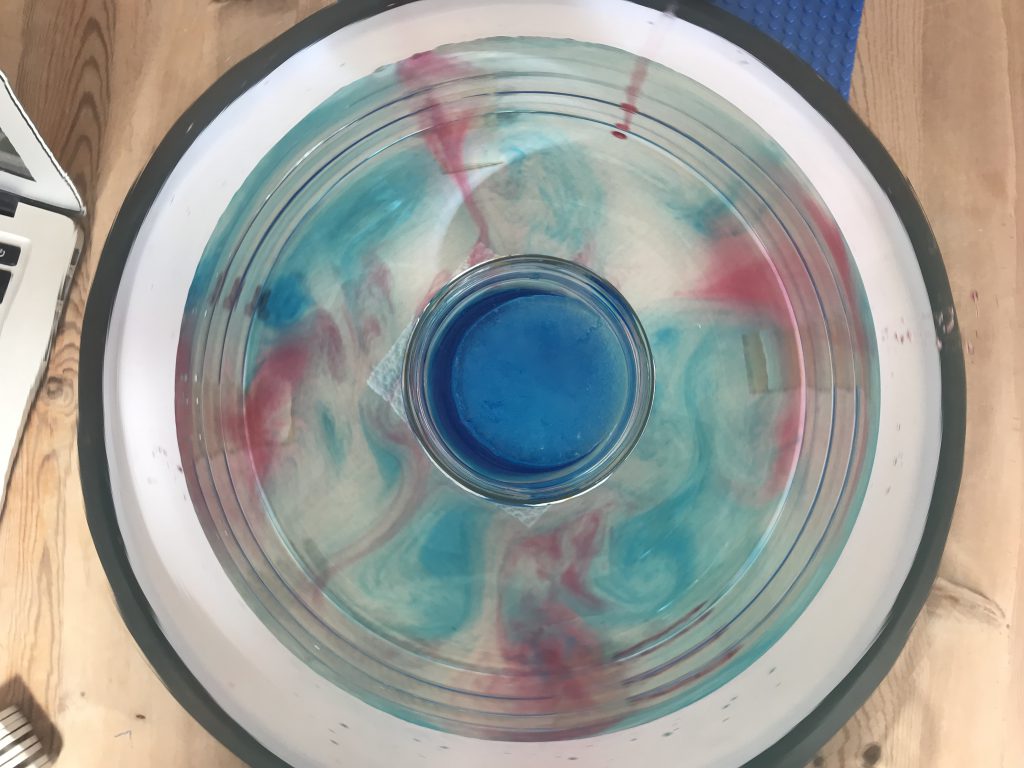
And then let the field develop.

So I think we’ve got this experiment down and can run it with the students once the semester starts up again in October! :-)


